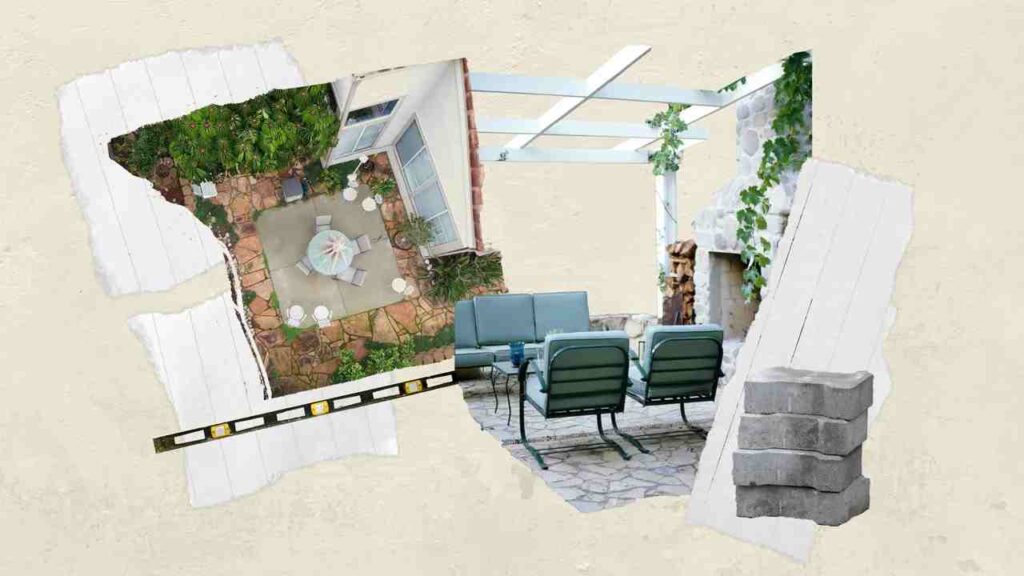When it comes to transforming your outdoor space, hardscaping plays a pivotal role in creating functional and visually appealing areas. Whether you’re envisioning a new patio, walkway, or retaining wall, understanding the hardscaping installation process is key to achieving your desired results. This process involves several steps that blend craftsmanship, creativity, and practicality. By delving into the intricacies of hardscaping installation, you can make informed decisions, collaborate effectively with professionals, and create outdoor spaces that enhance your lifestyle and property value. In this guide, we will explore the step-by-step process of hardscaping installation with the help of Liberty Heritage Nursery Farm, from planning and preparation to material selection, construction techniques, and final touches.

From initial planning and site preparation to material selection, construction, and finishing touches, each step contributes to the overall success of your hardscape project. It’s important to consider factors such as budget, timeline, design preferences, and maintenance requirements at each stage to ensure a seamless and satisfactory outcome. Hardscaping services involve collaboration between homeowners and professionals, emphasizing communication, problem-solving, and attention to detail.
Initial Planning
Effective hardscaping projects begin with thorough initial planning. This stage involves defining your goals, envisioning the desired outdoor space, and considering factors like functionality, aesthetics, and budget. Conducting a site assessment to understand the terrain, drainage patterns, and existing features is essential. Create a rough layout or design concept to guide the project’s direction, including the placement of hardscape elements such as patios, walkways, walls, and features like fire pits or water features. Additionally, consider how much value hardscaping can add to your property in terms of aesthetics, functionality, and increased market appeal.
Site Preparation
Site preparation is a critical step that sets the foundation for a successful hardscaping project. It involves clearing the area of vegetation, debris, and obstacles to create a clean and workable space. Excavation may be necessary to level the ground or create slopes for proper drainage. Addressing soil compaction and ensuring adequate sub-base preparation are vital for the stability and longevity of hardscape installations. Additionally, this stage may include marking out the project area, installing edging materials, and addressing any utility considerations such as irrigation lines or electrical wiring. These site preparation steps are essential for implementing various hardscaping ideas tailored to meet the needs and preferences of Liberty Township residents.
Material Selection
Choosing the right materials is crucial for the aesthetic appeal, durability, and functionality of your hardscape elements. Consider factors such as the climate in your region, intended use of the space, maintenance requirements, and your design preferences when selecting materials. Common hardscaping materials include natural stone, pavers, concrete, brick, wood, and composite materials. Each material has its unique characteristics, costs, and maintenance needs, so weigh your options carefully to align with your project goals and budget. When focusing on hardscaping and home accessibility, prioritize materials that enhance both the visual appeal and practicality of your outdoor spaces, ensuring seamless transitions and usability for all residents and visitors.
Construction Process
The construction process is where the hardscape design starts to take shape. Skilled professionals or contractors execute the planned layout, following industry best practices and manufacturer guidelines for material installation. This stage involves tasks such as laying pavers or stones for pathways and patios, constructing retaining walls, installing edging, building outdoor structures like pergolas or fireplaces, and integrating drainage solutions. Attention to detail, precision in measurements, and proper techniques are essential to ensure structural integrity, aesthetics, and functionality of the hardscape features.
Budget Considerations
Managing your budget is a crucial aspect of any hardscaping project. Determine your budget early in the planning phase and allocate funds for materials, labor, equipment rental, permits, and potential contingencies. Obtain detailed quotes or estimates from hardscaping professionals to understand the costs involved and identify areas where adjustments can be made to align with your budgetary constraints. Consider prioritizing elements based on importance and phasing the project if needed to manage costs effectively without compromising quality or design integrity.

Timeline Management
Setting realistic timelines and managing the project schedule efficiently is key to a smooth hardscaping installation. Consider factors such as weather conditions, availability of materials, labor constraints, and any specific deadlines or events that may influence the project timeline. Collaborate closely with your hardscaping team to establish a timeline that accounts for each stage of the project, from site preparation to completion. Regular communication and progress updates help track milestones, identify potential delays early, and ensure that the project stays on track for timely completion.
Design Preferences
Your design preferences play a significant role in shaping the aesthetics and functionality of your hardscape project. Consider elements such as the style (modern, traditional, rustic, etc.), color schemes, patterns, textures, and themes that complement your overall landscape design and architectural features. Incorporate elements that reflect your lifestyle, outdoor activities, and desired ambiance, whether it’s creating a cozy seating area, a vibrant garden path, or a serene water feature. Work closely with your hardscaping professionals to translate your design vision into tangible features that enhance your outdoor living spaces.
Maintenance Requirements
Understanding the maintenance needs of your hardscape elements is crucial for their long-term durability and aesthetics. Different materials and features require varying levels of maintenance, such as cleaning, sealing, weed control, and seasonal adjustments. Consider factors like climate, usage patterns, and exposure to elements when planning for maintenance. Choose materials and designs that align with your maintenance preferences and capabilities to ensure that your hardscape remains in optimal condition over time. Regular upkeep and proactive maintenance efforts can extend the lifespan and beauty of your outdoor hardscape features.
Collaboration with Professionals
Collaboration between homeowners and hardscaping professionals is essential for a successful project outcome. Communicate your goals, preferences, and expectations clearly with the hardscaping team and seek their expertise and input throughout the project. Professionals can offer valuable insights, recommend best practices, suggest design enhancements, and address technical challenges effectively. Maintain open and transparent communication channels to discuss progress, changes, and any concerns that may arise during the project. A collaborative approach fosters a positive working relationship and ensures that the final result aligns with your vision and meets quality standards.
Problem-Solving and Adjustments
Hardscaping projects may encounter challenges or unexpected issues during construction. Effective problem-solving skills and the ability to make necessary adjustments are crucial for overcoming obstacles and maintaining project momentum. Work closely with your hardscaping team to address any issues promptly, explore alternative solutions, and make informed decisions that keep the project on track. Flexibility and adaptability in response to changing circumstances contribute to a successful and stress-free hardscaping experience.
Achieving Desired Goals
The ultimate goal of hardscaping installation is to create outdoor spaces that align with your desired aesthetic, functional, and lifestyle goals. Evaluate the completed project against your initial vision, ensuring that it meets or exceeds your expectations in terms of design, quality, usability, and overall impact on your property. Take time to appreciate the transformation and enjoy the enhanced outdoor living experience that your hardscape features provide. Regularly maintain and care for your hardscape elements to preserve their beauty and functionality for years to come, maximizing the value and enjoyment of your outdoor spaces.
Conclusion
In conclusion, the hardscaping installation process encompasses multiple stages, each crucial for achieving a successful outcome. From initial planning and site preparation to material selection, construction, and finishing touches, attention to detail and collaboration are key. Factors such as budget management, timeline considerations, design preferences, and maintenance requirements significantly influence the project’s overall success and longevity. By working closely with experienced professionals, homeowners can navigate challenges, make informed decisions, and create outdoor spaces that not only enhance their property’s aesthetics but also provide functional and enjoyable living areas. Regular maintenance and proactive care further ensure the durability and beauty of hardscape features, contributing to a lasting and satisfying outdoor environment tailored to individual needs and preferences.
FAQs
FAQ: What is hardscaping?
Answer: Hardscaping refers to the non-living elements in landscaping, such as pathways, patios, walls, and structures, designed to enhance outdoor spaces’ functionality and aesthetics.
FAQ: Why is planning important in hardscaping projects?
Answer: Planning helps define goals, assess site conditions, consider design preferences, allocate budget, and ensure compliance with regulations, laying the groundwork for a successful project.
FAQ: How do I choose the right materials for my hardscape project?
Answer: Consider factors like climate, usage, maintenance requirements, budget, and design aesthetics when selecting materials such as natural stone, pavers, concrete, or wood for hardscape features.
FAQ: What are common challenges in hardscaping installations?
Answer: Challenges may include soil preparation, drainage considerations, managing project timelines, coordinating with utility services, and addressing unexpected site conditions during construction.
FAQ: How can I maintain my hardscape features for long-term durability?
Answer: Regular maintenance tasks like cleaning, sealing, weed control, and minor repairs help preserve the beauty and functionality of hardscape elements, ensuring their longevity and performance over time.
